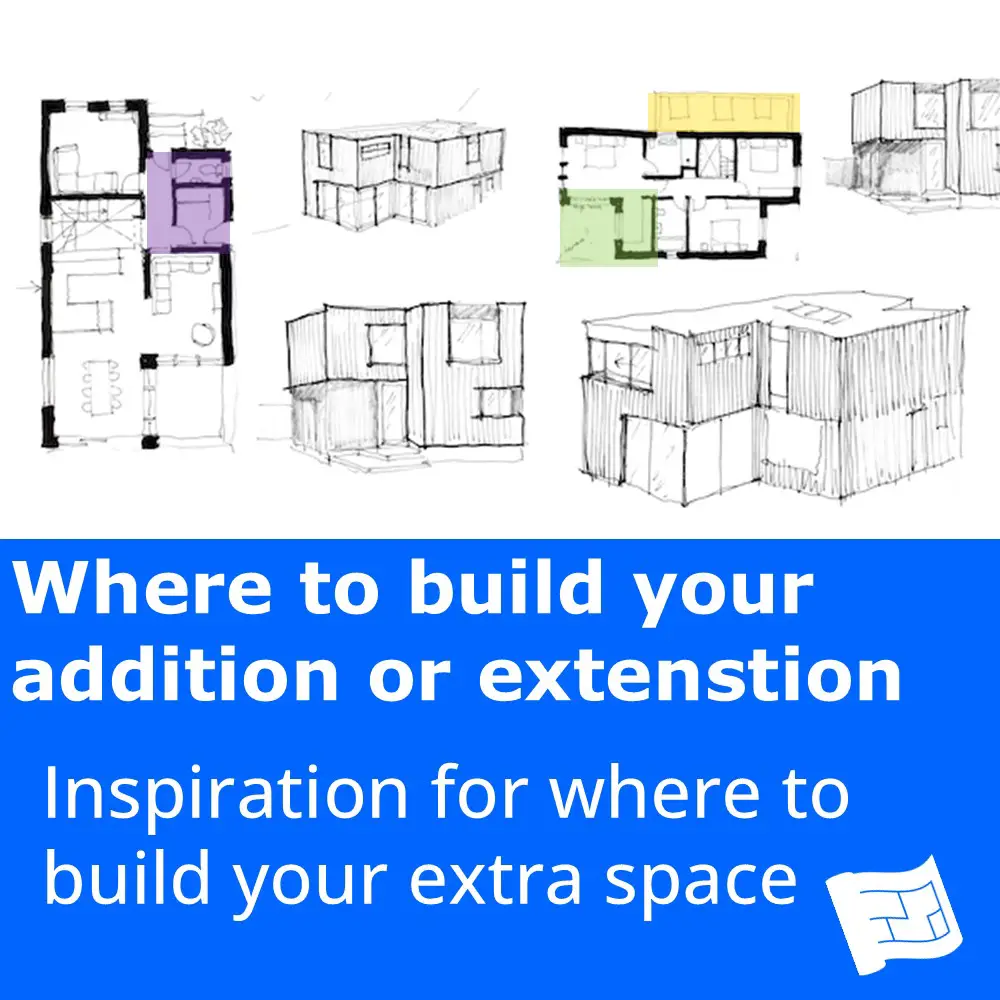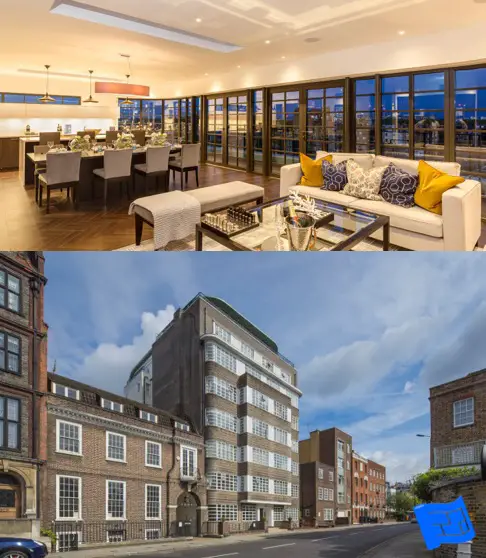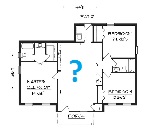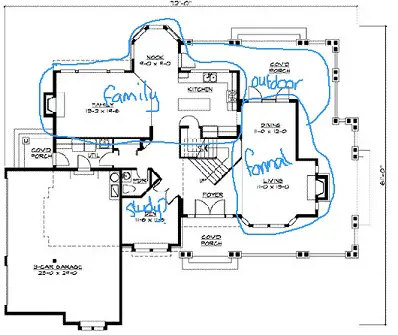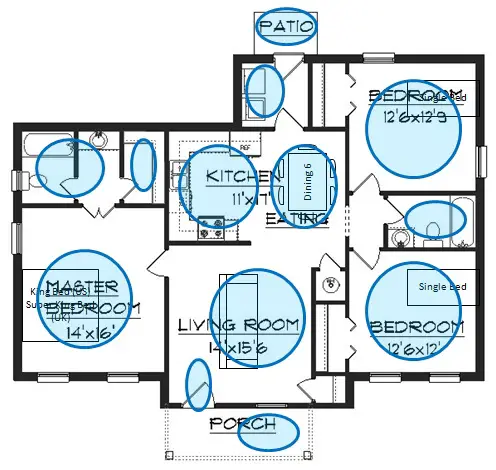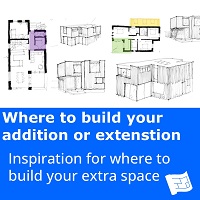- Home
- Floor Plan Analysis
- Where to Build Your Addition Or Extension
Where to build your addition or extension
If you're remodeling and perhaps building an addition rather than doing a complete new build, you need to have a strategy for where to build your addition or extension to see which might work best for your project.
Here's a quick run down...
Move in and live in it for a while
If you're not already living in the home you're planning to remodel, take some time to consider whether you could just move in and live in it for a while.
Sometimes this isn't possible if the home is in complete disrepair. Oftentimes though, the home is serviceable - it has everything it needs albeit it doesn't look very nice and yet there can be some real advantages of living in the existing home to fully appreciate the opportunities of both the current building and your site. That way you have even more of a feeling for where to build your addition or extension.
This extra thinking opportunity will set you back in terms of time, and it has to be balanced with any financial implications of holding off on your remodel for a while. Perhaps this will give you the opportunity to save a bit of extra money to put in to your renovation, or perhaps the economic situation dictates that waiting isn't really an option.
Stick within the current footprint
Thinking about what changes you would make to your existing home without adding any extra space is always a worthwhile exercise, even if you're planning to do an addition.
You may well find that you don't need extra space, you just need to rearrange and improve the quality of the space that you've already got.
What would the possibilities be if you knocked out a wall or removed a chimney, or changed the pitch of the roof to create an attic?
Take a look at the room design pages to find ideas about how your existing space could work better.
For example, if there are areas in your existing home that don't get enough light, or are cold, use your knowledge about orientation to think about how to rearrange the spaces.
If you have privacy issues, use your knowledge about designing for privacy to figure out a solution.
Open up an exterior wall on one side
This entails opening up an exterior wall on one side of your home, or a stretch of one side and building your addition so it creates a seamless flow of space from your existing home to your new addition.
Get the input of a structural engineer if you're planning to go down this route.
In the image below the back wall of the home has been removed in order to build the new addition and create a large kitchen, living, dining space. You can see the large structural beam required to make this addition possible
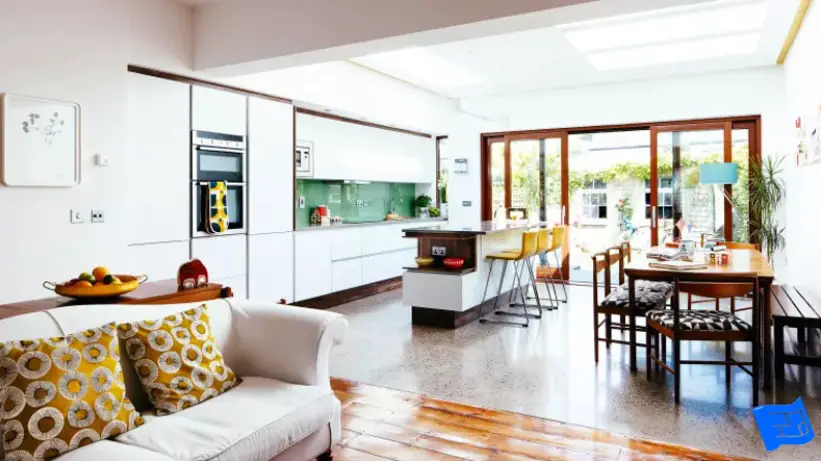 Large KLD created by opening up the back wall of the existing home
Large KLD created by opening up the back wall of the existing homeWrap around addition
By a wrap around addition I mean an addition that effectively wraps around a corner of your existing home.
The key thing about the wrap around strategy is what happens to the corner of the existing home?
In the example below you can see that the original corner of the home remains intact and the original back wall has been removed.
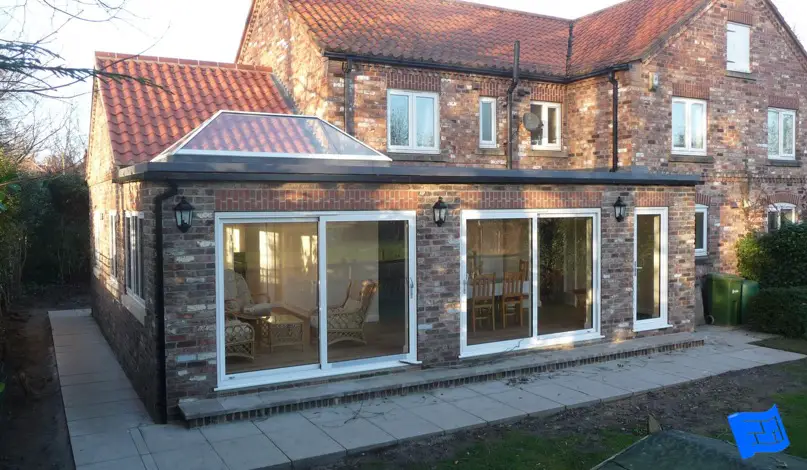
However in this example, both the original back and side walls have been removed, essentially removing the whole corner of the original home. You can see the big white beam that encloses the steel to make this possible.
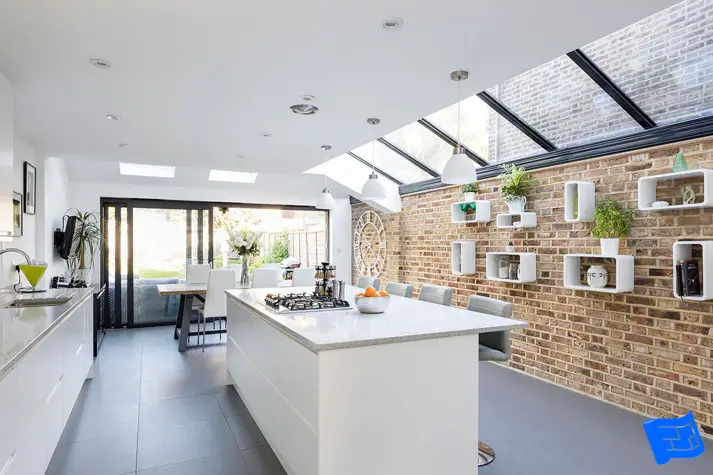
New building with access via a walkway
This strategy entails leaving the walls of your existing home largely intact and building a separate building as an addition, then joining the two buildings with a walkway.
This strategy really simplifies the build (and can therefore be very cost effective) because essentially you're building a new part of your home and then just joining it with the current part of your home. Another advantage it has is that you can keep disruption to your current home to a minimum while the addition is buillt alongside. Your current home will only be disrupted when it comes to build the walkway.
This strategy also works well if you want to make the addition slightly different in style as it provides a visual break from one building to the other.
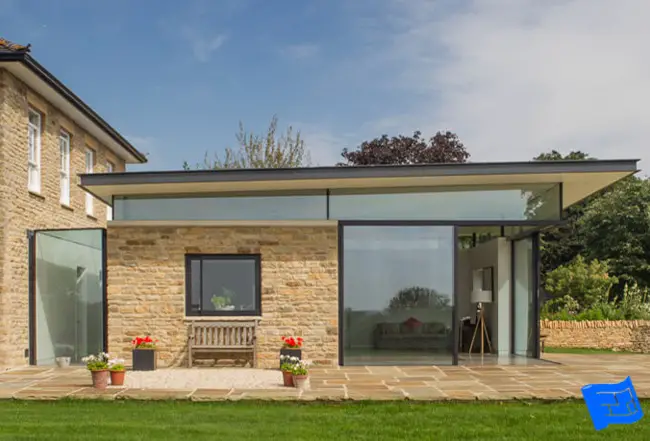

Both of the examples above happen to have a glass walkway, but there's nothing that says it has to be glass.
Separate building
Have you considered a separate building or room on your property as part of your design strategy?
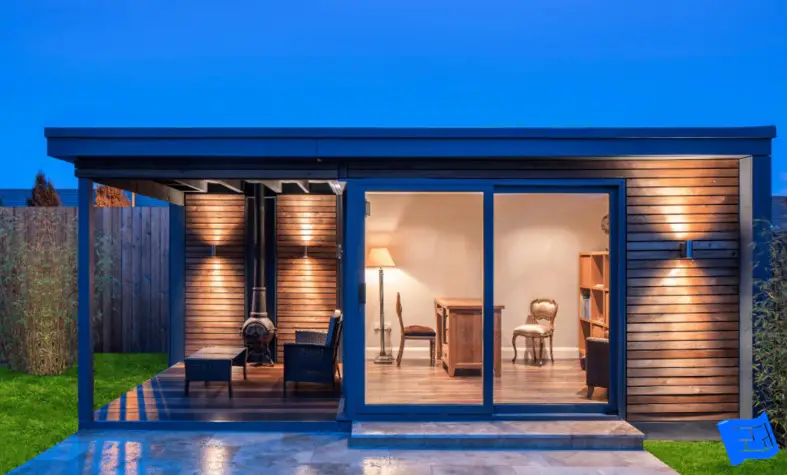
Creating space in the attic
Your attic or roof space could be a great option for creating new space. Attic spaces have a special character that I happen to really love.
There are several things to consider.
- What height can you achieve if you convert your attic space? Section R305 of the International Residential Code states that "For rooms with sloped ceilings, the required floor area of the room shall have a ceiling height of not less than 5 ft and not less than 50 percent of the required floor area shall have a ceiling height of not less than 7 feet."
- How will you get up to your attic? Take a look at section R311 of the IRC to find out what the staircase requirements are.
- How will you escape from the attic space in case of fire? Take a look at section R310 of the IRC.
- Will you keep the current roof line and simply add skylights or do you want to add a dormer window?
- Is changing the pitch of your roof to create more head room a possibility?
Remember to check your local building codes as there may be different or further requirements in your jurisdiction.
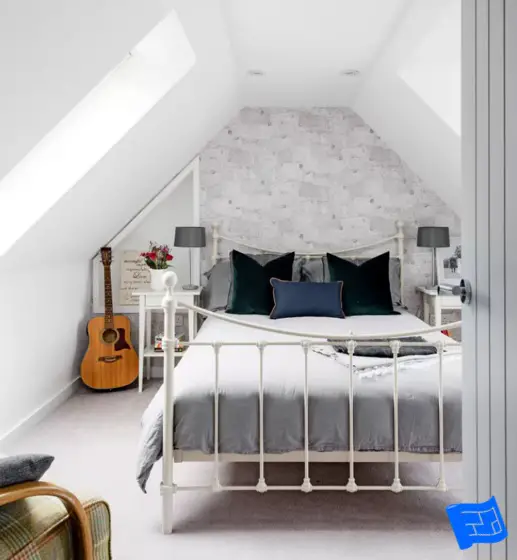 Attic conversion with skylights
Attic conversion with skylights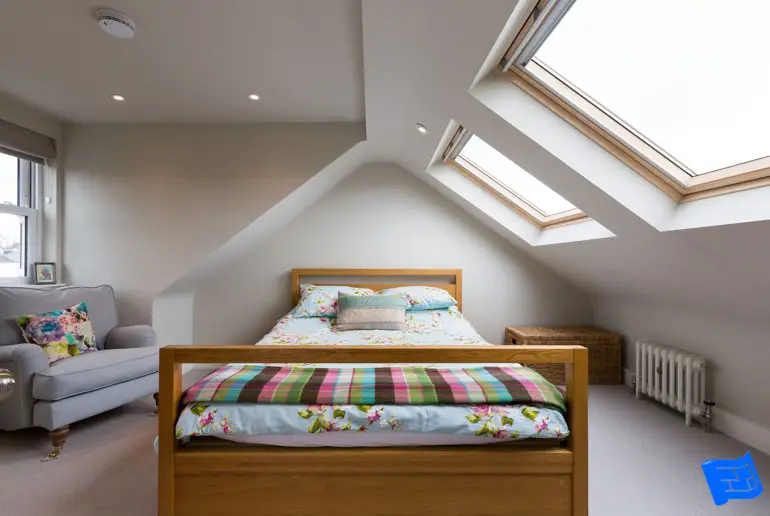 Attic conversion with a dormer on the left and skylights on the right
Attic conversion with a dormer on the left and skylights on the rightFinish or dig out the basement
Very similar to creating space in the attic, here's what to bear in mind if you're planning to convert your basement.
Digging out basements is notoriously expensive, but still worth the investment in cities where space is at a premium and land values warrant the spend.
There are several things to consider.
- What height can you achieve in your basement? Check you building code for the height you need to be able to gain habitable space. Generally you need a ceiling height of 7ft for habitable spaces but there are exceptions for bathrooms and utility spaces and for beams, girders and ducts.
- How will you get down to your basement? Take a look at your building code to find out what the staircase requirements are.
- How will you escape from your basement in case of fire? Again, check your residential code for requirements.
- How will you get light down into your basement? Options are to dig light wells (which you'll likely need at least one for escape purposes) or to have light come down through the stairwell or floor.
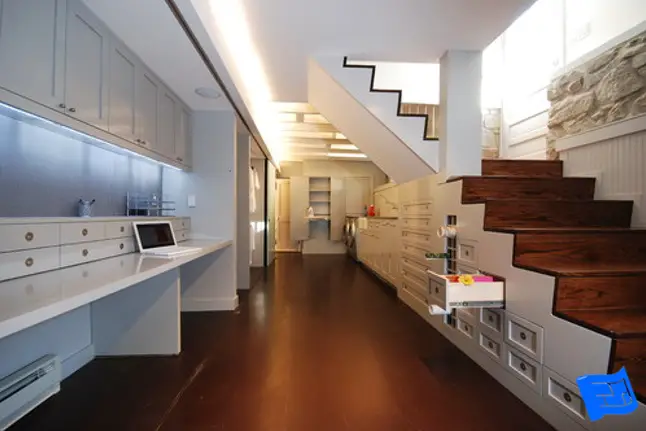 A finished basement with light from the stairwell.
A finished basement with light from the stairwell.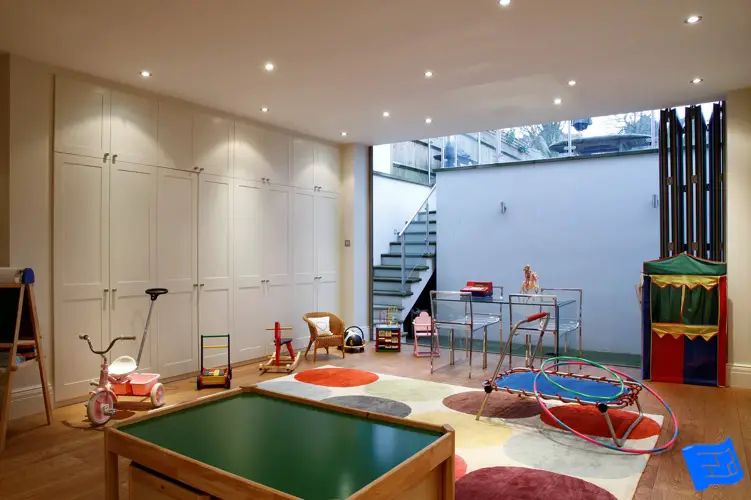 Well at end of basement provides light and access to the outside
Well at end of basement provides light and access to the outside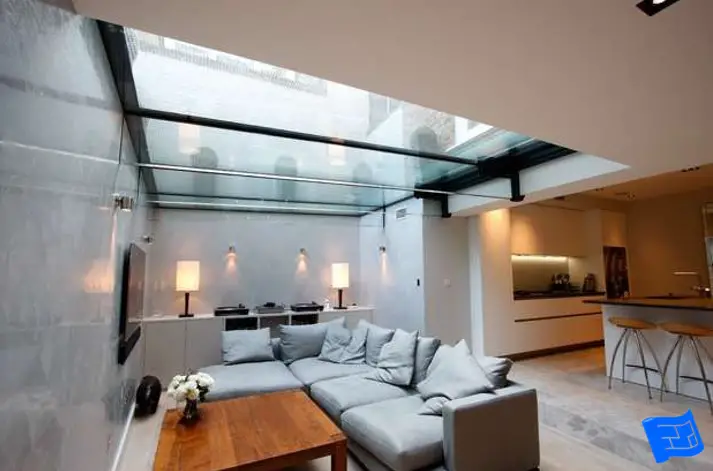 Basement with light from above
Basement with light from aboveConvert a garage
Would you garage serve you better as extra living space rather than a parking space?
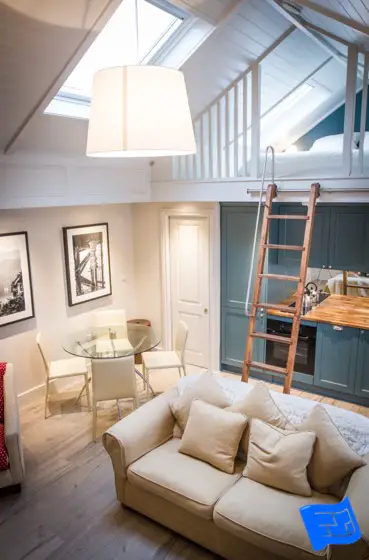 Garage converted into a studio apartment with kitchen, living, dining space along with a bathroom and sleeping loft
Garage converted into a studio apartment with kitchen, living, dining space along with a bathroom and sleeping loftAdding a story
Could the best spot for your addition be in the sky?
The art deco penthouse below was built as a prefab in a factory, then craned onto the top of the building.
I hope that list gives you food for thought about where to build your addition or extension.
Member Resources
This video from 30 x 40 talks about the different strategies you can use for additions.
More on floor plan analysis...
Here's some more pages on floor plan analysis.
The floor plan symbols page may also be helpful.

